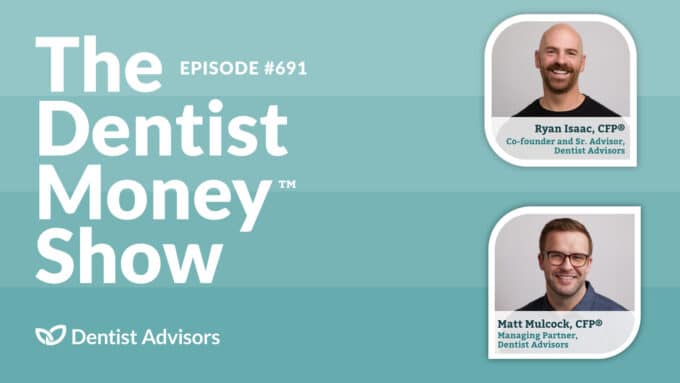With federal student loan repayments set to resume this fall, many dentists will unknowingly end up in the wrong plan. With six different options available, you’ll need to be intentional with the plan you select. Those who aren’t paying attention are likely to choose a plan that doesn’t suit their needs and make substantially higher interest payments than necessary.
Consider the following scenarios after dental school graduation, where both Dr. Jim Givitis and Dr. Jeremy Jam had $293,900 in student loan debt with an average interest rate of 7%. Jim defaulted to a standard plan requiring a monthly payment of $3,412, with $1,714 directed toward interest. In contrast, Jeremy chose the SAVE plan, with a $400 interest-only payment, while the government covered the remaining $1,214. This strategic decision gave Jeremy additional cash flow of over $2,900 per month, enabling him to fund other practice-building opportunities. Additionally, Jeremy becomes eligible for student loan forgiveness after 25 years improving his financial outlook even more.
To make sure you’re on the winning side of the repayment equation and choose the right plan, you’ll need to calculate your income and the amount you can dedicate to your student loans. Let’s talk through the steps:
A: Approximate Your Income
For associate dentists, calculating your income to determine the best repayment plan is straightforward.
Step 1: Find your last paystub.
Step 2: Identify your Total Earnings for the year-to-date.
Look for a line item stating “Total Earnings” or similar.
Step 3: Calculate your monthly income.
Divide the Total Year Earnings by the number of months elapsed.
Example: If it’s March and your 2023 Total Earnings are $40,000, your monthly income is $40,000/3 = $13,333.
Step 4: Determine your annual income.
Multiply that monthly amount by 12 to get your annual salary.
Example: $13,333 * 12 = $160,000 per year.
For practice owners, the calculation can be more involved.
Step 1: Get your latest Profit and Loss statement.
Contact your accountant for assistance if you don’t have one.
Step 2: Identify the following line items (they may have different names):
-
- W2 Wages
- Net Income (last item on the profit and loss statement)
- Business Interest Deduction
- Depreciation
- Amortization
Step 3: Calculate your estimated income by summing the following numbers.
(W2 Wages + Net Income + Business Interest Deduction + Depreciation + Amortization)
B: Budget for Your Loans
Next, calculate the portion of your cash flow available for student loans. Dust off your budget and update it with fresh numbers. You can use a trusted Excel sheet or software like Mint or YNAB to help you. While it may be a hassle, reviewing your last 1-3 months of spending can provide valuable insights to make the right decision for your student loan repayment plan.
Also consider future income and cash flow when choosing a repayment plan. If your goal is practice acquisition, estimate how much money you’ll need on hand to make the purchase. Choose a plan with lower initial payments and higher future costs if it supports practice funding, rather than a fixed option that might eat up the cash you’ll need for a purchase.
C: Calculate Your Payments
Now that we have your income and your budget in place, you’ll want to enter this information into the FSA Loan Simulator Wizard. Click Here to be taken to the Simulator.
Step 1: Click on the items that apply to you (or click that none of these apply to you).
Step 2: Based on the information you clicked, you will input the required information.
Step 3: Input the details from your loans.
You can do this by logging into your loan servicer. Common Servicers include EdFinancial Services, FedLoan Servicing, Great Lakes Educational Loan Services, Nelnet, etc.
Step 4: Click “I don’t have a specific Goal” and click “View Results.”
Step 5: Click “View and Compare All Plans.”
Once you reach the comparison screen, various loan options will be presented. These alternatives come with advantages and disadvantages that you can review. Evaluate each loan against your cash flow and future objectives to decide the best fit. For instance, if paying off your loans is your primary goal, a standard repayment plan could be a good fit. On the other hand, if acquiring a practice soon is on the horizon, opting for a lower monthly repayment plan might be more suitable. If you still find yourself confused after reviewing all the information about your income, spending, and FSA Calculator, don’t hesitate to book a free consultation with Dentist Advisors. A few minutes of your time might provide you the clarity and confidence in choosing the most cost-effective repayment plan which could potentially save you thousands of dollars.
Do you have questions about your student loans? Email us at loans@dentistadvisors.com





